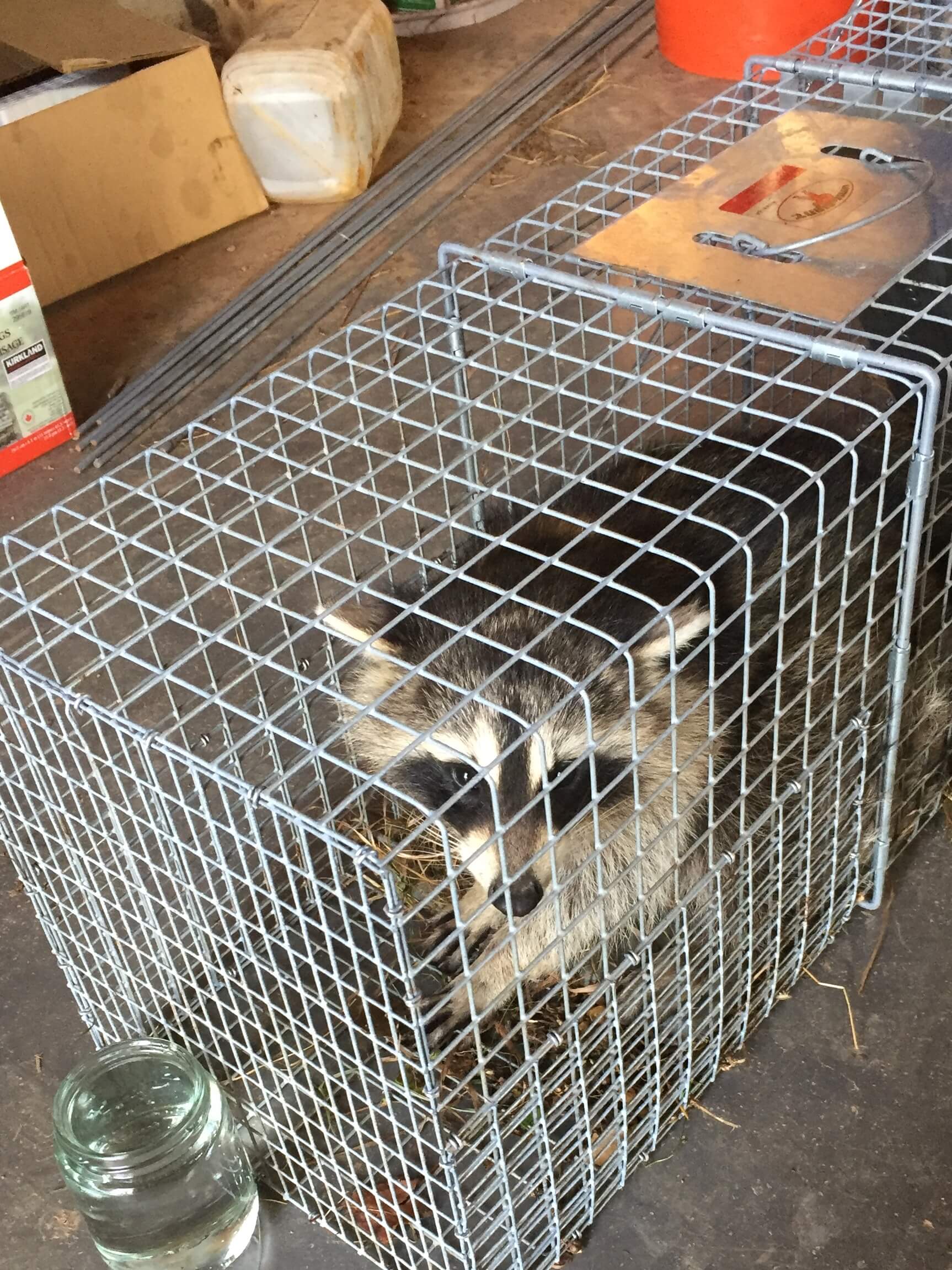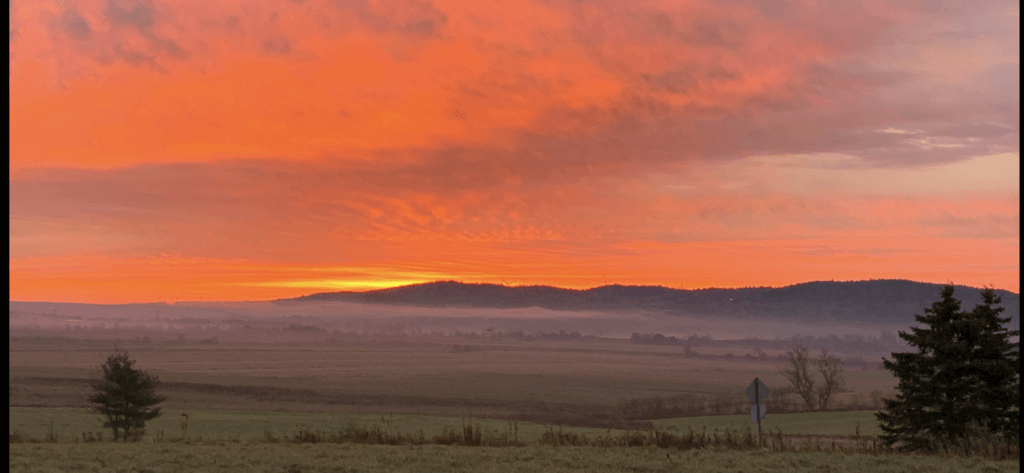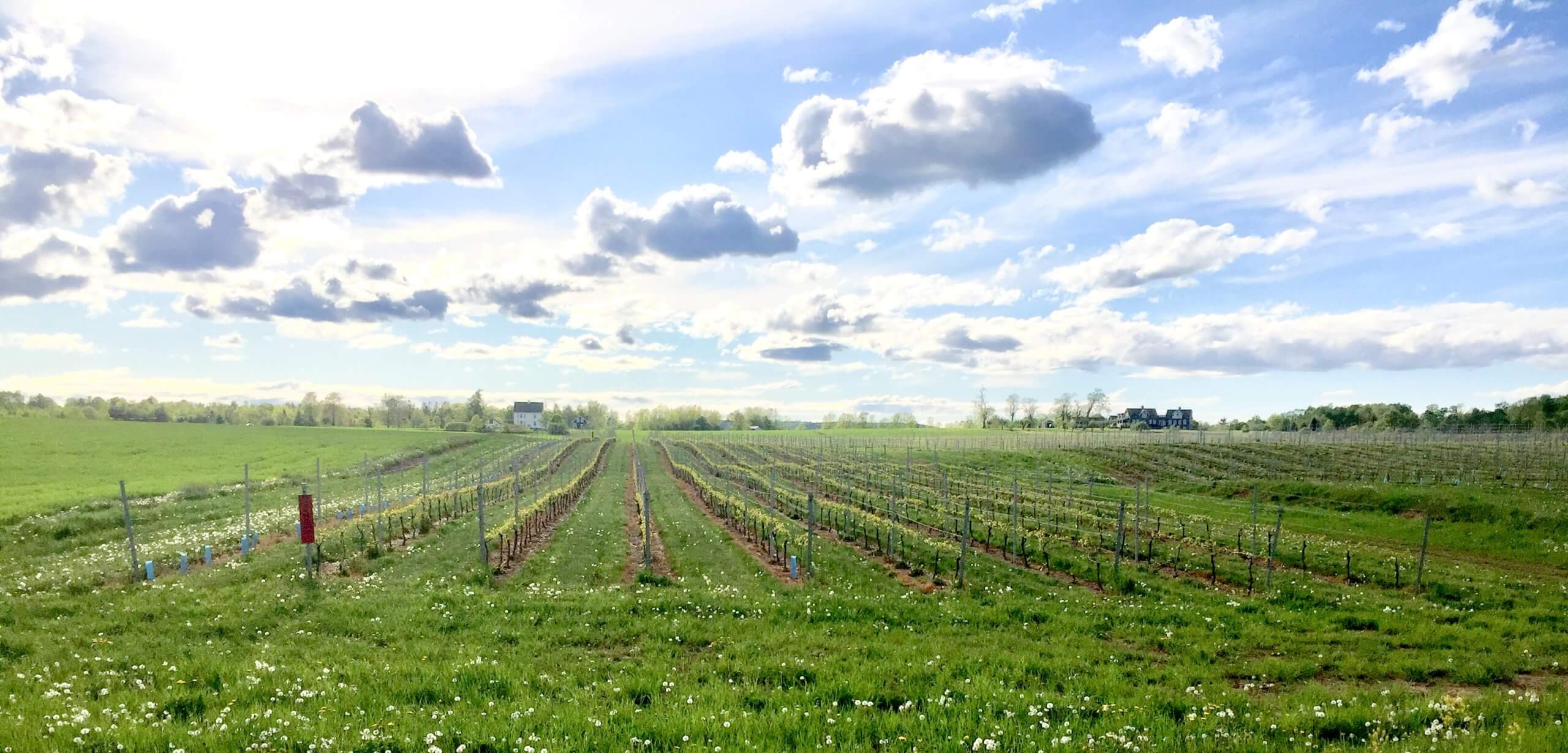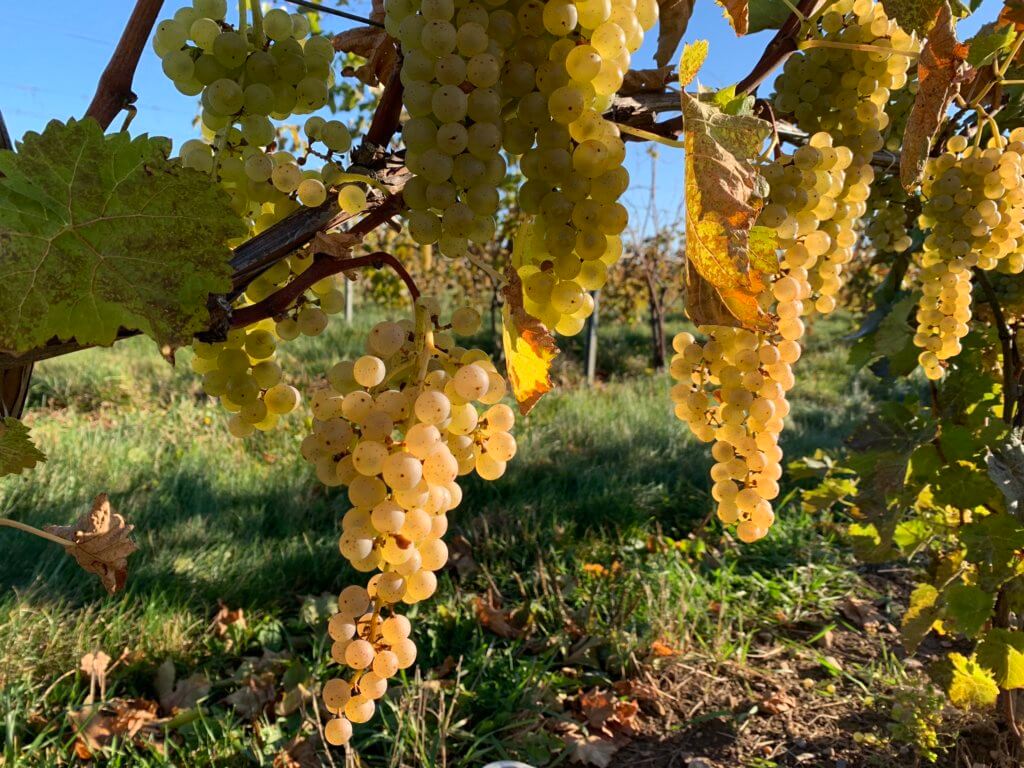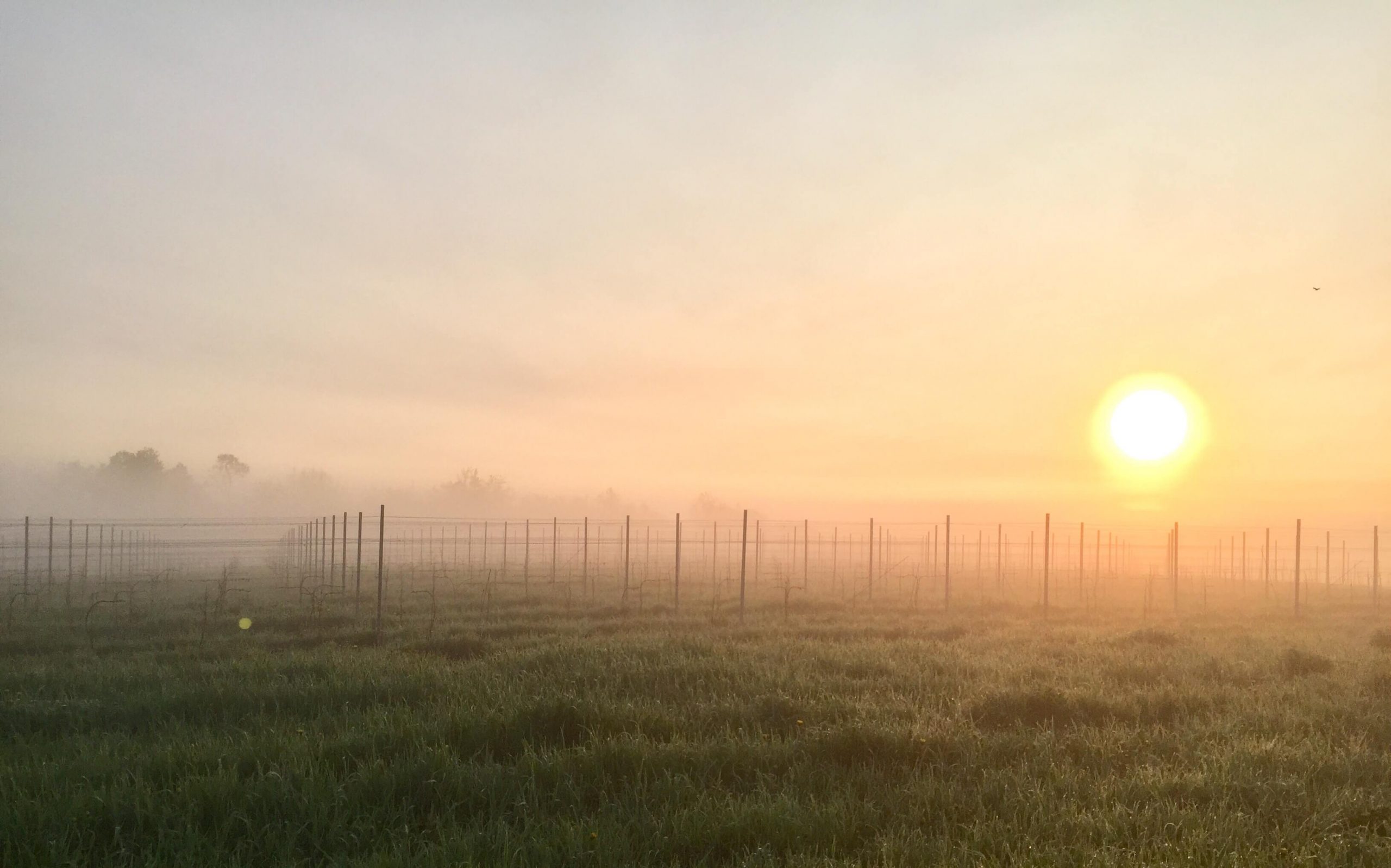Nova Scotia Grape Insurance Program
The NS grape insurance program is one complicated affair. Fortunately, the field agent, Angie Garnett is very helpful and transparent in her explanations of the program. The program doesn’t cover dead vines. Immature vine production is covered according to a formula that takes an average of the insured vineyard mature production history for the damaged variety or a provincial average if the insured vineyard has no history. Third year vines are given an expected yield of 50% of the mature vines yield and fourth year vines 75% of expected yield. Once an immature vine yield is established it is applied to future new plantings.
For mature vines (5 years old or greater) an “average insurable yield” (AIY) is calculated. This is an undefined calculation that considers previous yields, variety, number of acres planted in that variety, planting year of variety and previous immature vine production. My AIY for vinifera was 8922 kg. My insurance was for 80% coverage or 7136 kg. Although I had a reduction in chardonnay I had an increase in Reisling so will collect a lower insurance. It should be noted that loss of vinifera pays 2$/kg, the same as for hybrid varieties despite the higher risk of loss for vinifera and the higher sale price. Despite not paying a higher price for vinifera loss, the premium rate was higher for vinifera than hybrids (15.76% vs 8.33%) in 2020. The total premium for a predicted yield of 25 metric tons of hybrid grapes and 7 tons of vinifera in 2020 cost 6426$ of which approximately two thirds was paid for by the federal and provincial government.
Sustainable Nutrient Program
Organic farming was discontinued at Johnston Vineyards in an effort to restore vine health after the devastating freeze of June 4, 2018. Too many compounds needed for this program were not considered “organic”, a term that seemed to be arbitrarily applied at times. Sustainable farming allowed the use of a wider range of compounds while avoiding the toxicity of “hard” chemicals. Aspire and Mesz are prill based granular fertilizers that combine Boron, sulfur, zinc, and calcium with N-P-K. Foliar nutrients including Symspray, Biomax, Iron DL, Sysstem MG, Sysstem Cal, Zinc and Vigor-Cal-Bor-Moly were sprayed. This approach resulted in a marked improvement in the health of the Vidal and Seyval vines. The Muscat showed evidence of poor nitrogen metabolism on the SAP leaf test so 2 separate foliar sprays of urea were applied with good results. The G-318 showed similar problems with nitrogen metabolism but was not sprayed with urea. I believe that those vines would have benefited as well.
Sustainable pesticide Program
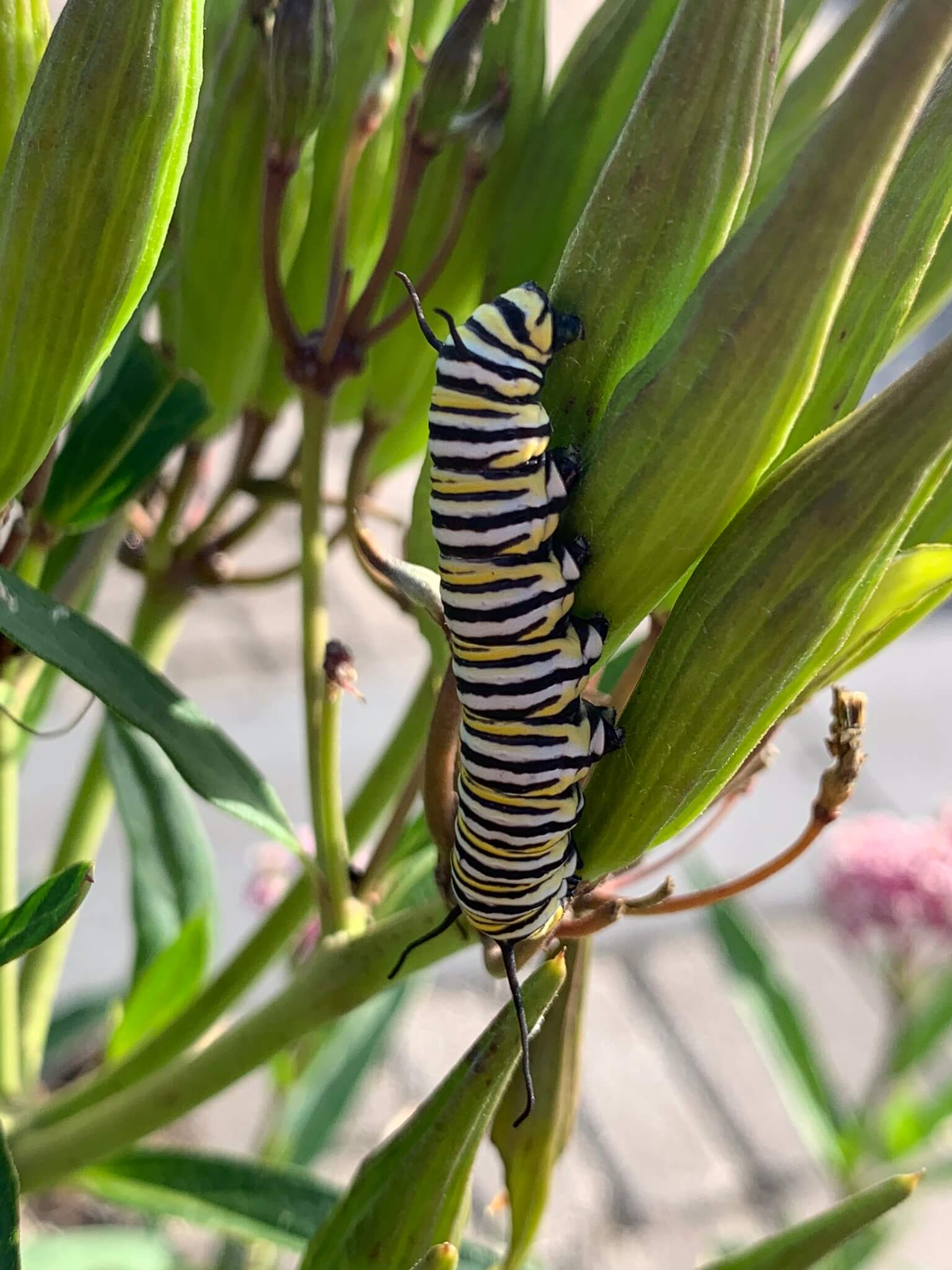
Movento and 2 herbicides were the only “hard” chemicals used in 2020. Movento was sprayed (136 ml/acre) on the Petite Pearl once to control foliar phylloxera. Roundup was sprayed once in the spring when temperatures were cold (not less than 5 degrees) followed by Ignite (not less than 10 degrees) which was sprayed twice to control weeds. The dry summer, in combination with the use of Ceuva (0.5% solution) and Kumulus was highly successful in controlling downy mildew and powdery mildew, respectively. Additional doses of Ceuva were applied on susceptible varieties for control of Boytritis. One dose of Serifel (0.15 kg/acre) was applied just prior to bunch closure to control Boytritis. Bird nests in the vineyard were abundant. By avoiding broad spectrum toxins the hope is that beneficial organisms will proliferate.
Untimely Cold Spells Contribute to Ongoing Vinifera Mortality
The late spring frost that occurred on June 4, 2018 continues to impact the vinifera that was planted in 2016 and 2017. Crown gall that developed in trunks exposed to the frost slowly killed about half the remaining vinifera vines. The cold spell during the night of February 15, 2020 killed a number of trunks along with numerous fruiting canes. The temperature at the Kentville research station dropped to -25 C at ground level and was even lower further to the east of the Annapolis Valley. New suckers grew from the base of many vines preserving the fruiting potential for next year. Ripening in the Reisling block was arrested at a brix of about 17 by a frost in mid September.
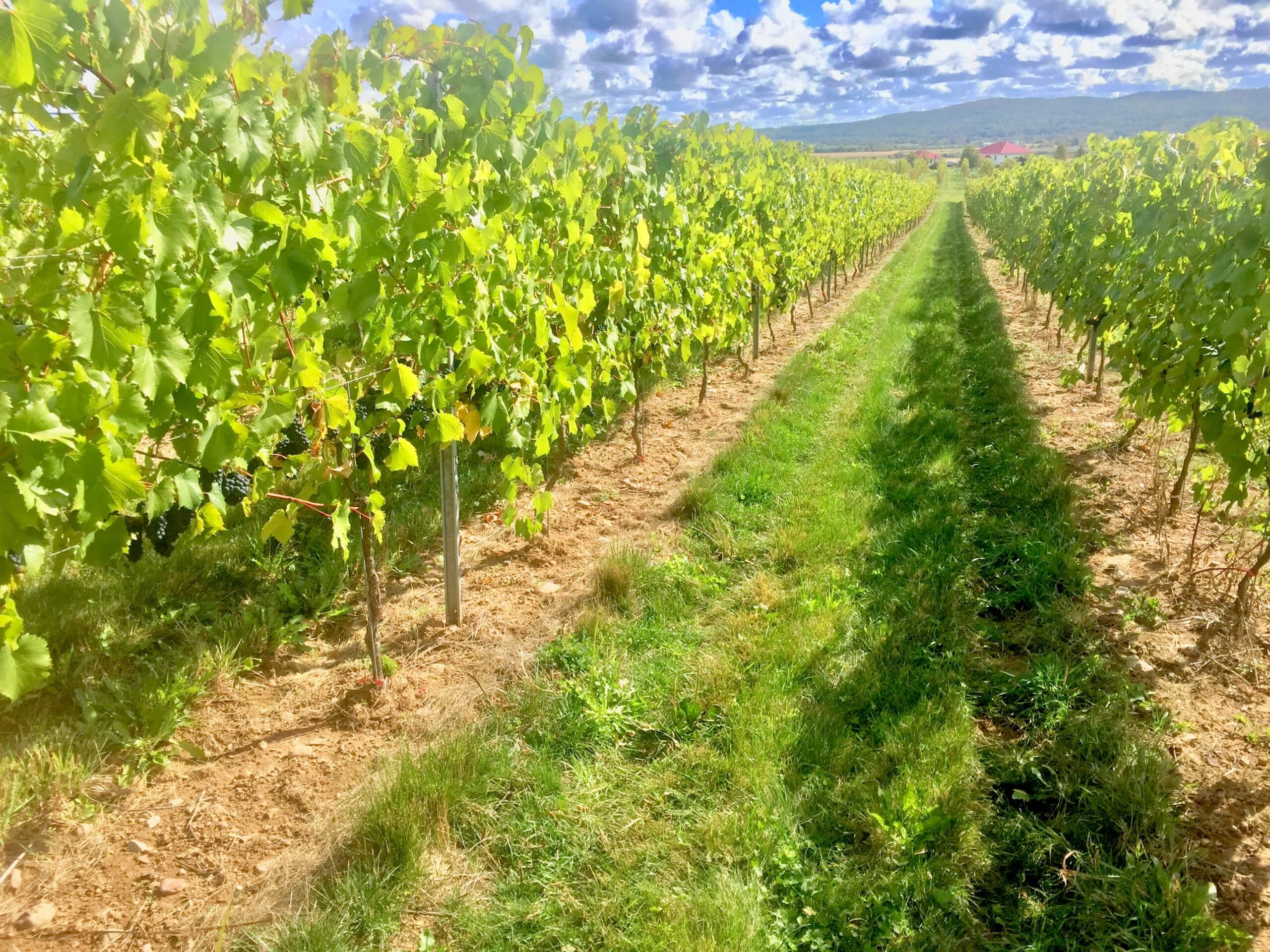
Trellis for Petite Pearl
Vertical Shoot Positioning (VSP) of the trellis for the Petite Pearl has worked well contrary to recommendations to put the fruiting canes on the top wire by various growers of this grape variety, Top wire allows the variety to grow vigorously into the lane making access to the vines to spray impossible. Manual harvesting is difficult due to the dense canopy and mechanical harvesting is not possible due to the crowded lanes. This year one tuck and one hedging was all that was required to produce a nicely controlled canopy. Picking was a breeze!
Odds and Ends
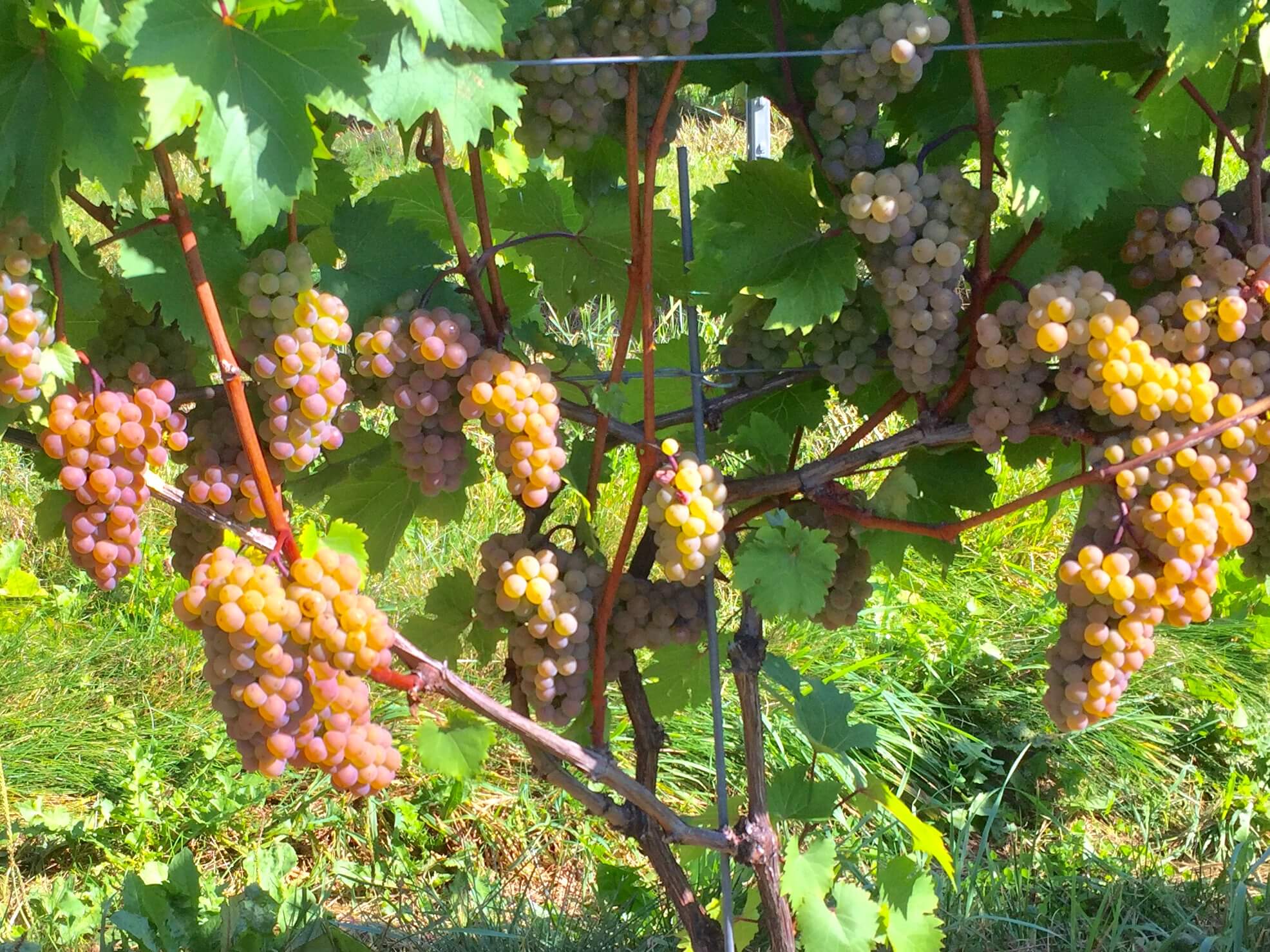
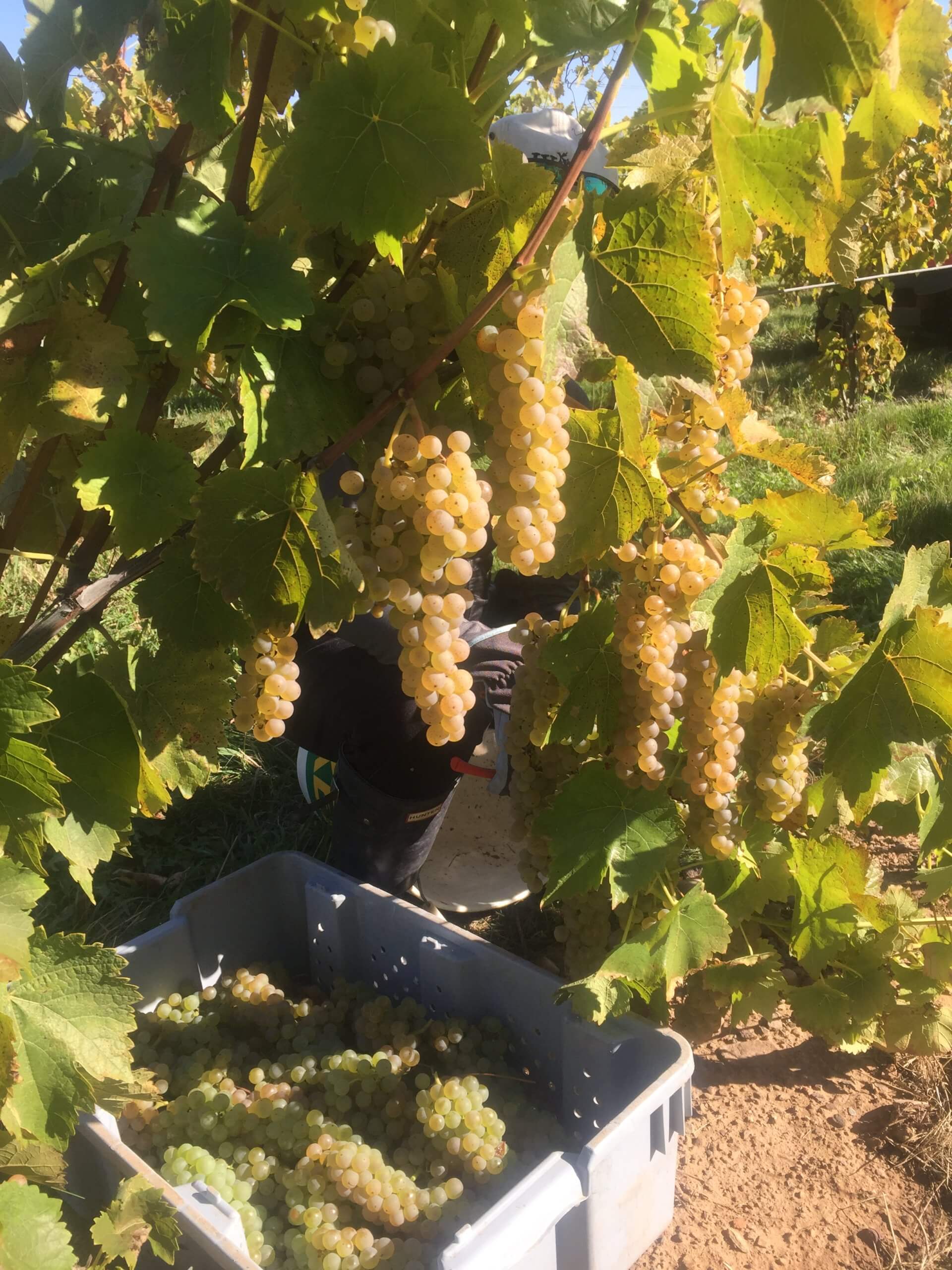
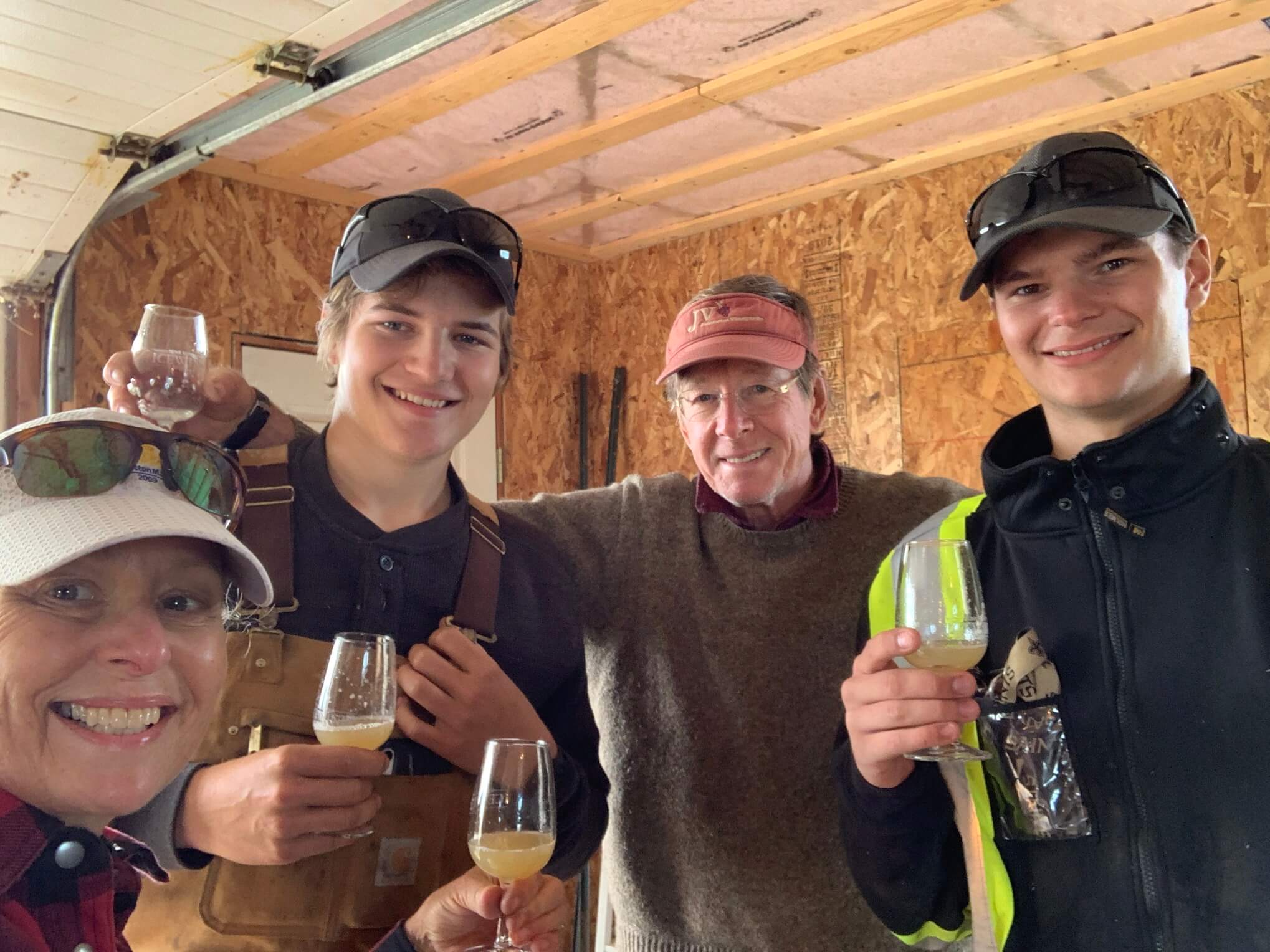

Marquette getting ready for winter
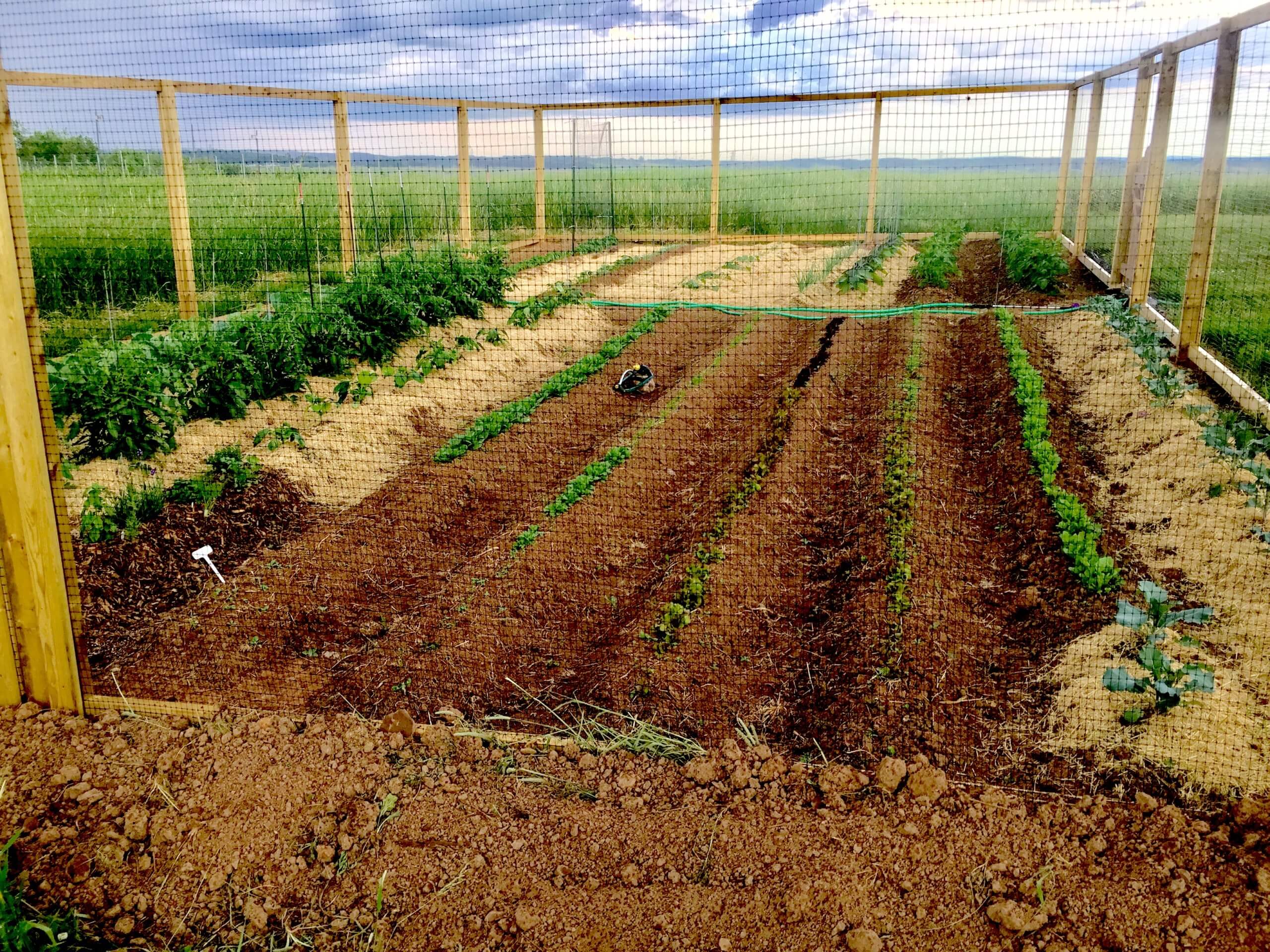
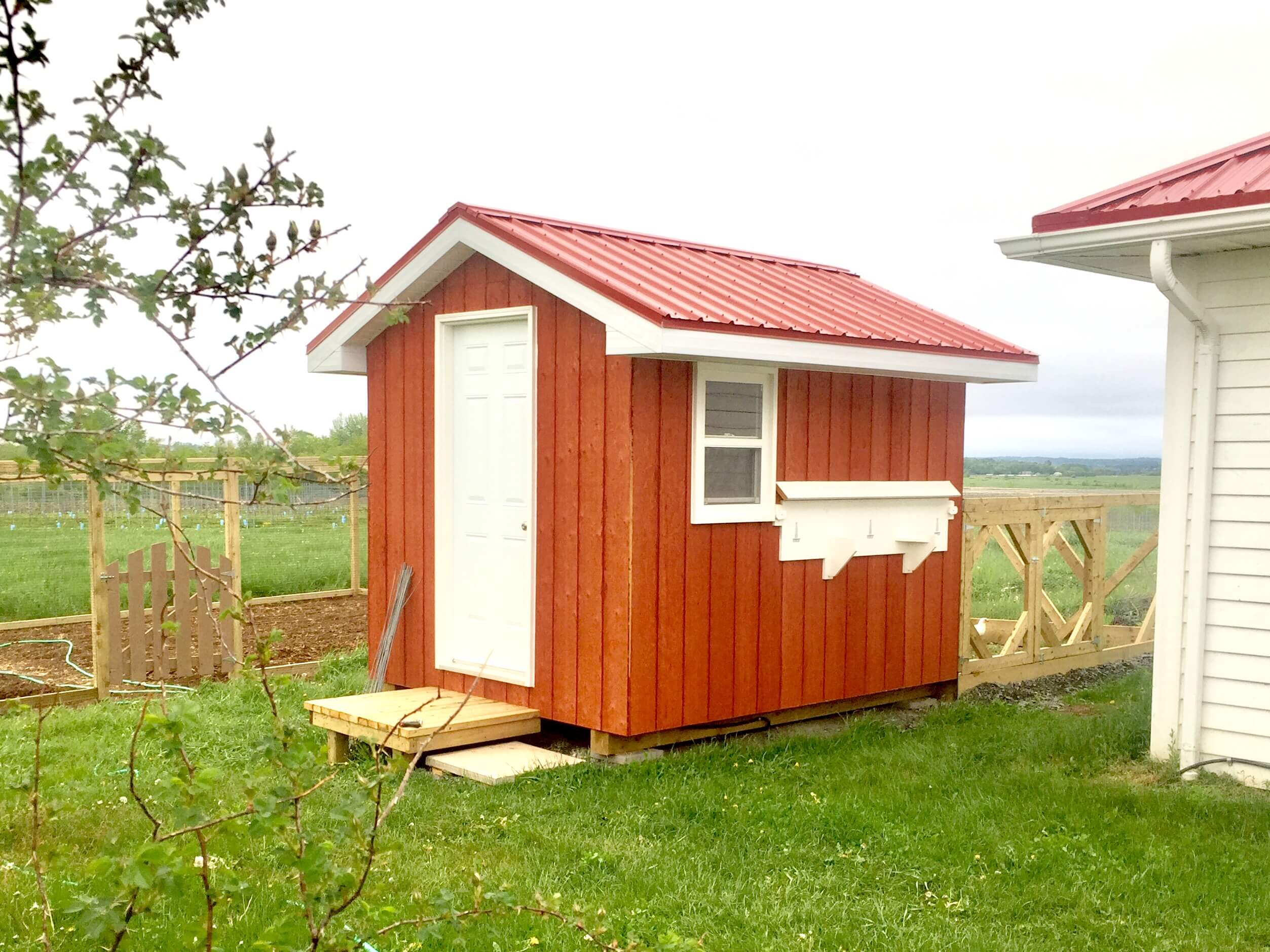
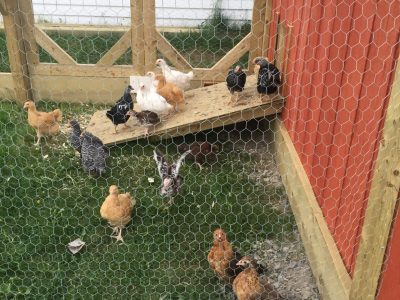
Like many other people caught up in the Covid 19 pandemic, Johnston Vineyards planted a garden! It needed to be fenced in to protect it from the deer. A large amount of cow manure was spread last fall and it was tilled in this spring. The vegetables grew to record size led by Napoli carrots which also were tender and tasted great throughout the growing season. Ten chickens were added to the farm which required the building of a new chicken house.
Birds and Other Pests
